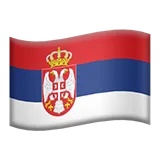Time management
The main difference between the project business and the product one is the way the time is arranged in them. In the project business, everything is subordinated to the cash flow balance. Your mood and the state of the business by the end of the month will depend on how much money you have spent on wages and so on, and how much you have earned.
By the payday, your employees turn from almost family members into a barrier troop that is breathing down your neck and watching whether you have enough money to pay for their work. Especially at the beginning, when you haven’t learned how to cope with the rhythm of projects yet, and each project has its own specific rhythm. Roughly speaking: you get an advance payment, first, you live on it, and then you can’t wait to receive the postpay.
The most difficult time is before the final project delivery when you already have your expenses but haven’t been paid for the work completed. If you do nothing with the projects, then the rhythms of all projects will synchronize. One day you’ll find yourself waiting for payments from all the projects at once, and you are in a big debt.
In such circumstances, even a small delay in payment turns into a huge problem. Therefore, the main task in managing the time of the project business is to synchronize the rhythms of the projects. It is necessary to make sure that payments for one project compensate for drawdowns in the others.
In the product business, time is subordinated to the rhythm of the client’s processes. Therefore, existing metrics will have to be analyzed daily, weekly, quarterly – all the time. You will set up a lot of analytical tools, but it won’t seem enough.
Besides getting the knowledge in each of the processes, you do two things: accumulate the tempo and reduce friction. In general, you optimize everything.
Life stages of the product
I got used to treating the stages of a business’s life as breakpoints on the investment return curve. A graph looks like this. It is smooth in the picture, but in real life, everything, of course, is much trickier.

Let's take a look at the points on the graph:
1. An idea – here you started to spend money.
2. You started to take money from the client.
3. You get as much from clients as you spend.
4. Here your business got profitable.
5. You have reached the limit of the channel effectiveness.
6. Your business started to die (if you didn't manage to grow the next version of it inside of it).
Read about the stages in part 4; it’s coming soon.








